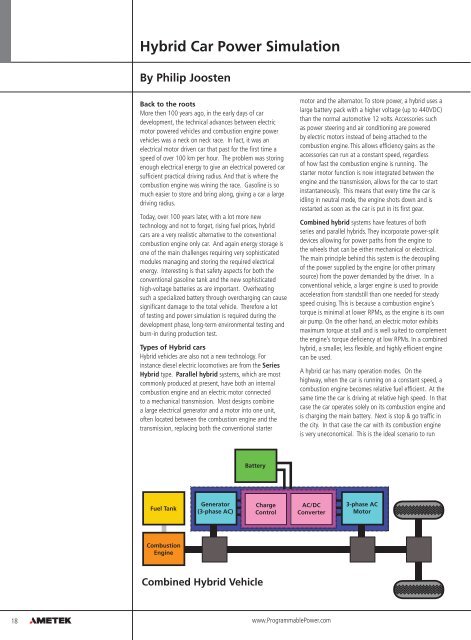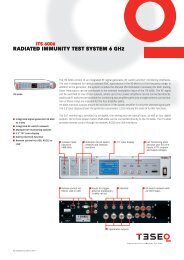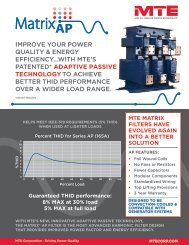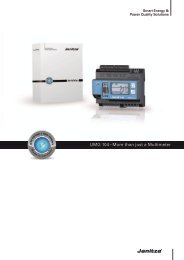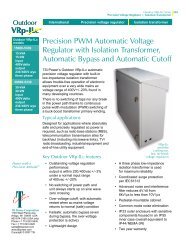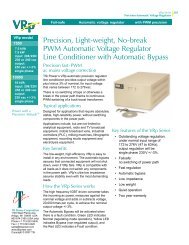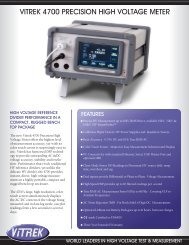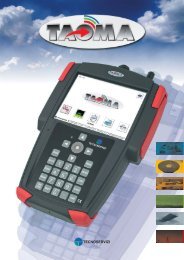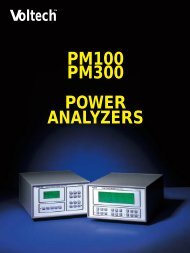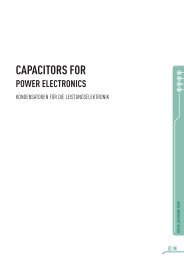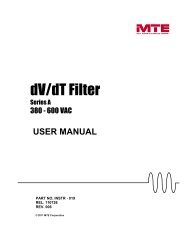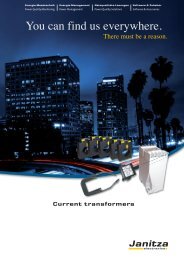Download - Westek
Download - Westek
Download - Westek
You also want an ePaper? Increase the reach of your titles
YUMPU automatically turns print PDFs into web optimized ePapers that Google loves.
Hybrid Car Power Simulation<br />
By Philip Joosten<br />
Back to the roots<br />
More then 100 years ago, in the early days of car<br />
development, the technical advances between electric<br />
motor powered vehicles and combustion engine power<br />
vehicles was a neck on neck race. In fact, it was an<br />
electrical motor driven car that past for the first time a<br />
speed of over 100 km per hour. The problem was storing<br />
enough electrical energy to give an electrical powered car<br />
sufficient practical driving radius. And that is where the<br />
combustion engine was wining the race. Gasoline is so<br />
much easier to store and bring along, giving a car a large<br />
driving radius.<br />
Today, over 100 years later, with a lot more new<br />
technology and not to forget, rising fuel prices, hybrid<br />
cars are a very realistic alternative to the conventional<br />
combustion engine only car. And again energy storage is<br />
one of the main challenges requiring very sophisticated<br />
modules managing and storing the required electrical<br />
energy. Interesting is that safety aspects for both the<br />
conventional gasoline tank and the new sophisticated<br />
high-voltage batteries as are important. Overheating<br />
such a specialized battery through overcharging can cause<br />
significant damage to the total vehicle. Therefore a lot<br />
of testing and power simulation is required during the<br />
development phase, long-term environmental testing and<br />
burn-in during production test.<br />
Types of Hybrid cars<br />
Hybrid vehicles are also not a new technology. For<br />
instance diesel electric locomotives are from the Series<br />
Hybrid type. Parallel hybrid systems, which are most<br />
commonly produced at present, have both an internal<br />
combustion engine and an electric motor connected<br />
to a mechanical transmission. Most designs combine<br />
a large electrical generator and a motor into one unit,<br />
often located between the combustion engine and the<br />
transmission, replacing both the conventional starter<br />
motor and the alternator. To store power, a hybrid uses a<br />
large battery pack with a higher voltage (up to 440VDC)<br />
than the normal automotive 12 volts. Accessories such<br />
as power steering and air conditioning are powered<br />
by electric motors instead of being attached to the<br />
combustion engine. This allows efficiency gains as the<br />
accessories can run at a constant speed, regardless<br />
of how fast the combustion engine is running. The<br />
starter motor function is now integrated between the<br />
engine and the transmission, allows for the car to start<br />
instantaneously. This means that every time the car is<br />
idling in neutral mode, the engine shots down and is<br />
restarted as soon as the car is put in its first gear.<br />
Combined hybrid systems have features of both<br />
series and parallel hybrids. They incorporate power-split<br />
devices allowing for power paths from the engine to<br />
the wheels that can be either mechanical or electrical.<br />
The main principle behind this system is the decoupling<br />
of the power supplied by the engine (or other primary<br />
source) from the power demanded by the driver. In a<br />
conventional vehicle, a larger engine is used to provide<br />
acceleration from standstill than one needed for steady<br />
speed cruising. This is because a combustion engine’s<br />
torque is minimal at lower RPMs, as the engine is its own<br />
air pump. On the other hand, an electric motor exhibits<br />
maximum torque at stall and is well suited to complement<br />
the engine’s torque deficiency at low RPMs. In a combined<br />
hybrid, a smaller, less flexible, and highly efficient engine<br />
can be used.<br />
A hybrid car has many operation modes. On the<br />
highway, when the car is running on a constant speed, a<br />
combustion engine becomes relative fuel efficient. At the<br />
same time the car is driving at relative high speed. In that<br />
case the car operates solely on its combustion engine and<br />
is charging the main battery. Next is stop & go traffic in<br />
the city. In that case the car with its combustion engine<br />
is very uneconomical. This is the ideal scenario to run<br />
Battery<br />
Fuel Tank<br />
Generator<br />
(3-phase AC)<br />
Charge<br />
Control<br />
AC/DC<br />
Converter<br />
3-phase AC<br />
Motor<br />
Combustion<br />
Engine<br />
Combined Hybrid Vehicle<br />
18<br />
www.ProgrammablePower.com


